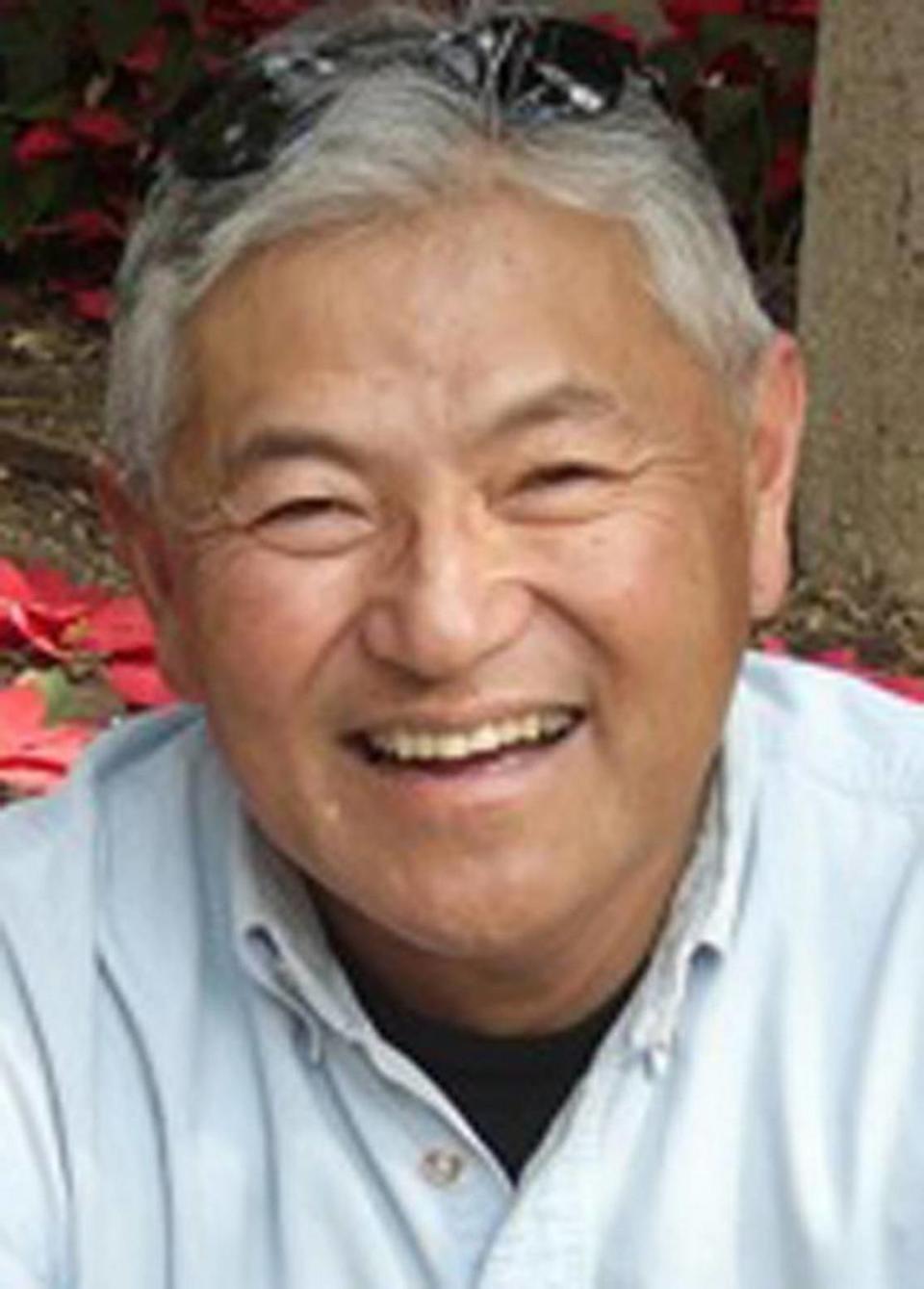This Valley farmer finds memories and meaning in 60-year-old aluminum Christmas tree | Opinion
- Oops!Something went wrong.Please try again later.
- Oops!Something went wrong.Please try again later.
A Christmas tree. A family tradition. The same tree for 60 years. The year, 1963. A photo documents we purchased an aluminum tree. We were not part of a new wave of modernism and artistic innovation. Being Buddhist, we had a different take on Christmas, but still celebrated this holiday with gifts and sometimes a tree.
So my dad bought this silver gem, avoiding the costs and time to get a real tree every year. (We did not purchase the magical color wheel, which cast brilliant greens, red and odd blue and orange onto the reflective tree). We enjoyed this tree, but soon in 1965, the Charlie Brown Christmas show destroyed all momentum for such an artificial “fake tree” celebration. But we kept the tree for years and years until all of us kids left the farm and I believed I would never return (alas, I did come home and have farmed since the 1980s).
We stored it for decades. On a farm we have the luxury of keeping things forever, believing there’s a place in the future for such objects. And behold, about 10 years ago I rediscovered the tree and it now is part of a new and old tradition in our holiday decorations. Marcy, my wife, does insist on having a living green tree, so she annually decorates our ficus tree to add her own charm and her family’s Wisconsin sensibility to our home.
A week ago I stumbled on the 1963 photo and a sense of the past clashes with the present and perhaps the future. My sense of the 1960s — I was just a child and then teenager — was a decade of turbulence, change, polarization, war and crisis. The civil rights revolution unfolded, along with the Vietnam War overseas and growing questions about America’s role. Politics swung wildly with the sweep of LBJ in 1964 and the “Great Society,” followed by the election of Richard Nixon in 1968 and his eventual resignation with Watergate in 1974.
Our shiny Christmas tree was showered with a musical revolution with the British Invasion of the Beatles and Rolling Stones to the protest songs of Bob Dylan and later acid rock. But at the same time, tragic shadows came with assassinations: President Kennedy, the Rev. Dr. Martin Luther King Jr. and Robert Kennedy. Race riots spread across the land, along with the battles for justice and civil rights in the South and even in our farmlands with the UFW and farm worker labor movements. Each year our shiny tree seemed to grow a little duller and dimmer.
On the farm, struggle seems eternal. Storms in the 1960s, like floods even then in Fresno along Shields and Marks avenues, which wisely lead to the construction of flood basins (that saved us this past year from downpours). Rachel Carson’s pivotal “Silent Spring” book and the Santa Barbara oil spill gave rise to Earth Day and a new environmentalism that cast a shadow and bright spotlight over all the farmlands of this Valley.
Raisin prices were terrible in the 1960s, then some hope in the next decade, yet perhaps a foreshadowing of how climate impacts the fields — a brutal frost in 1972 (I remember the tender green vine shoots burned brown in March) and the downpour of rains on our raisins in 1976 and 1978. Along with lousy peach prices, this made me question why we kept farming. So we put away the fake tree for decades.
One memory kept the tree alive for me in an odd way: My baachan, or grandmother, who immigrated from Japan in 1918, liked the shiny silver holiday decorations. Even on Christmas Day, she’d wake up, join us in opening gifts while sipping hot tea, then go outside and work for a few hours in the orchards, shoveling evil weeds like Johnson grass, returning in the late afternoon for a holiday meal with family. I’d join her out in the fields on some Christmases, returning to the warmth of our home, and we’d stand next to the glimmering tree as if the sunlight reflection warmed us — and in a way it did: This was about family.
So a decade ago, I found the old original box with the silver “limbs” carefully stored in paper sleeves and renewed the tradition. It now seems fitting to match the times we live in. Political division and polarization. Wars overseas fill the news hours. Weather — we now call it climate change and crisis — remains the dominant force dictating the rhythms of a farm, a family and a community. We have unrest and have yet to find our voices following a three-year pandemic.
Yet something beckons. I need to bring back conversations and personal exchanges. I seek a renewed sense of the past in the present, perhaps like our quest to re-purpose a 60-year-old Christmas tree: to find meaning in our daily stories of life. The tales of family, of community, of a Valley that bind us together. A silver tree recycled and renewed with a spirit that defines us.
Am I foolish to believe so? And how a simple old aluminum Christmas tree from the 1960s somehow holds a magical secret to reconnect? Maybe. But at least I’m reminded of the past and the times we live in today that will grow into tales of change, conflict, hope and perhaps, with luck, meaning.
Happy holidays. I’ll be thinking of all this in a few days when we dismantle our old tree and save it for another generation.
David Masumoto is a farmer and writer living near Fresno.


